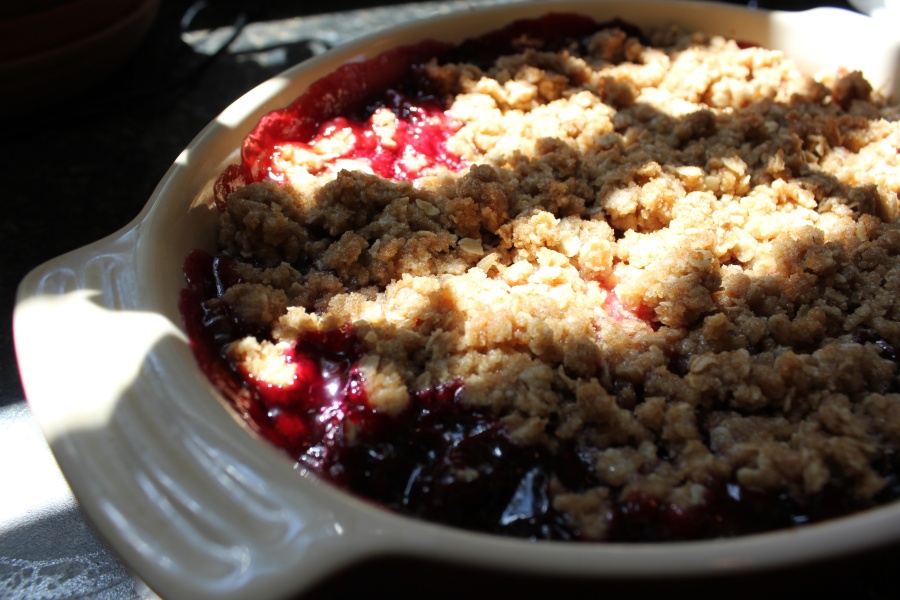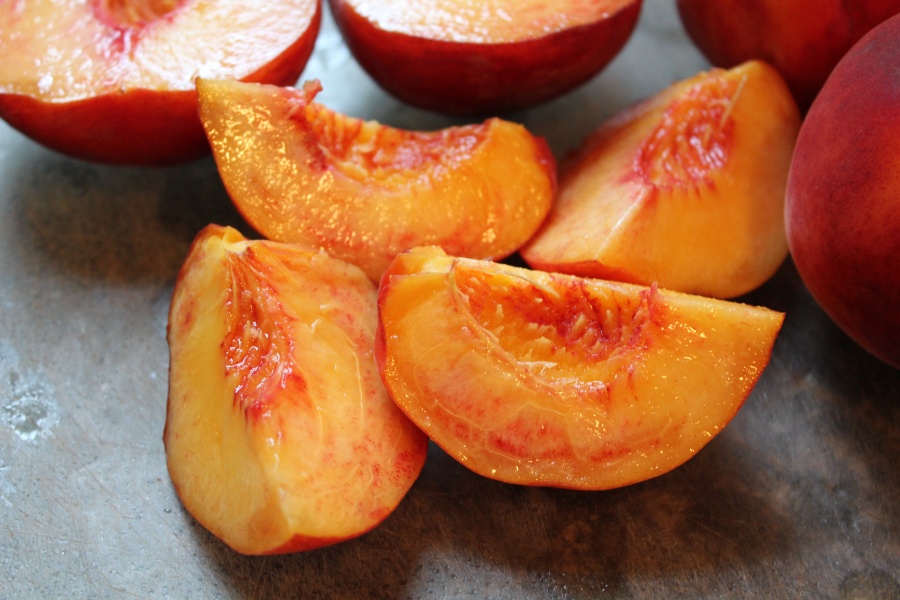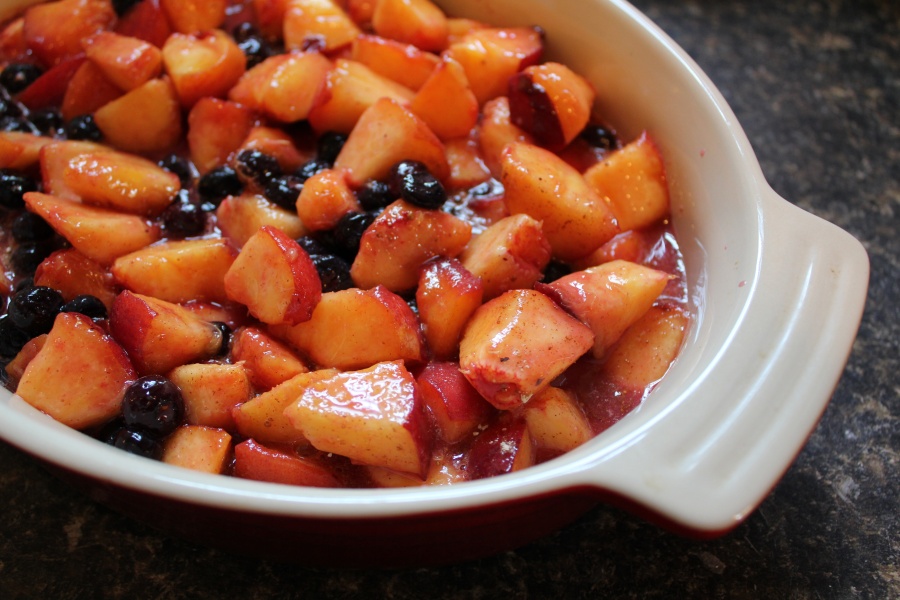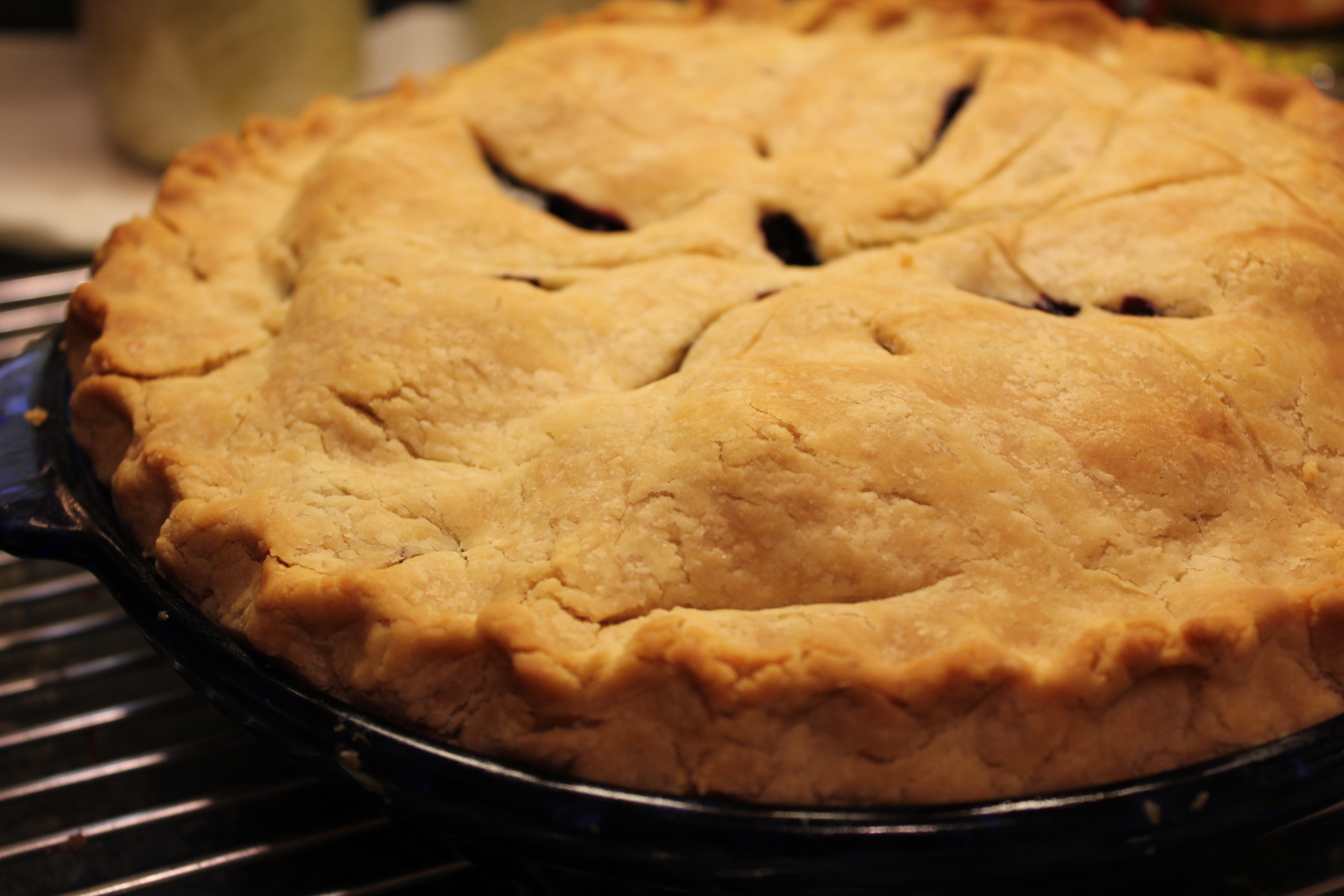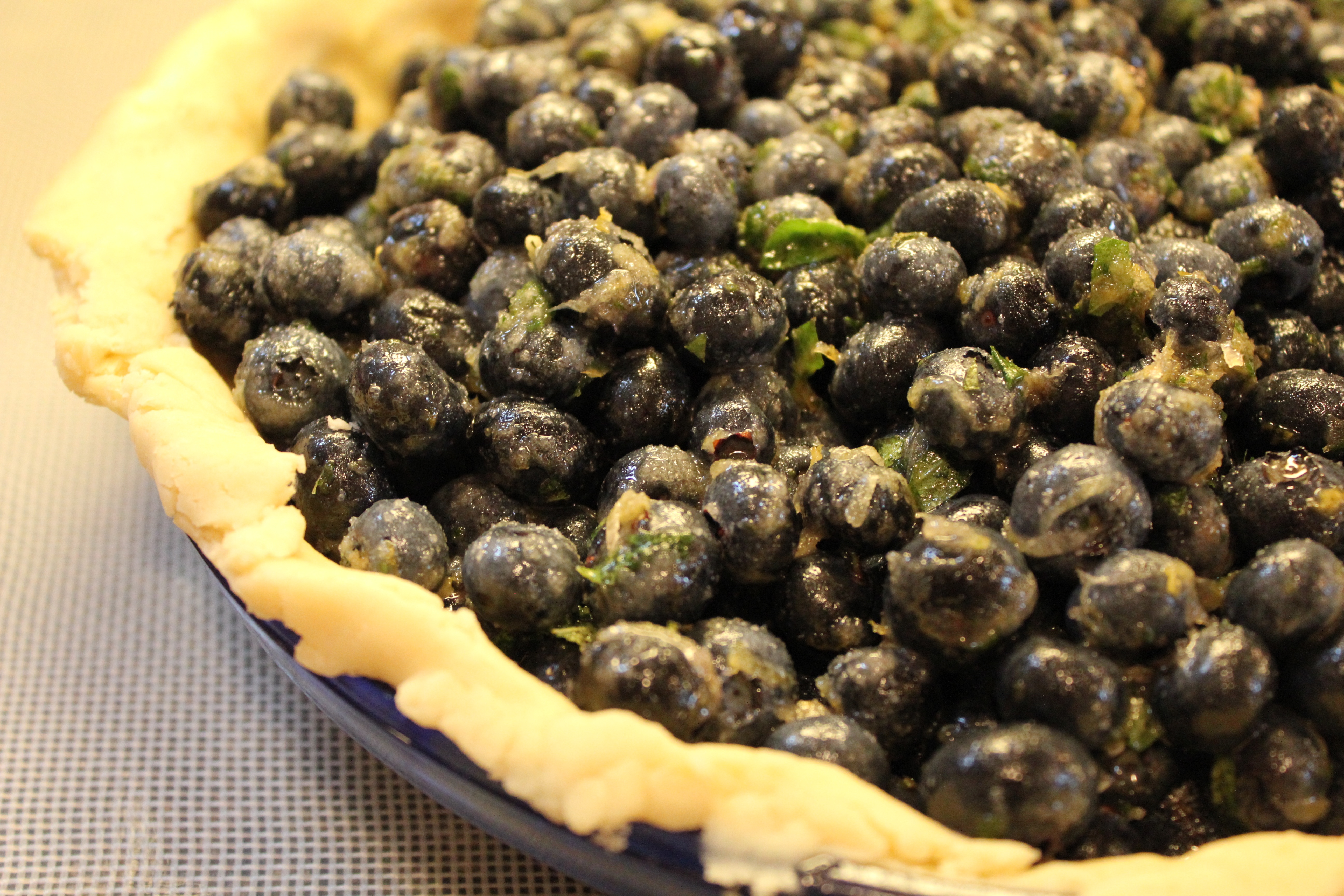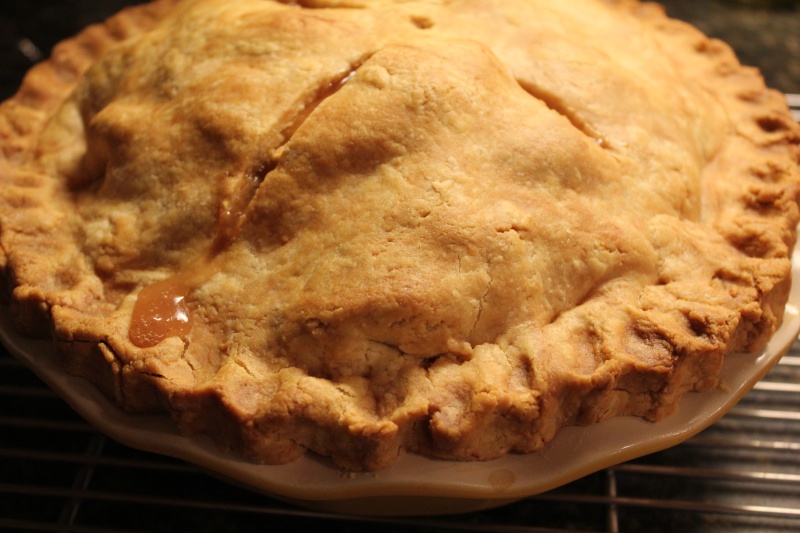This is the time of year when my to-do list starts to be mostly recipes centered around using up the vegetables and fruits that are flowing in our house. (Most of the other items on the list are some subset or variation of “clean house.”) When I have the time and energy, I find myself trying to knock out three or four items at once to stay on top of things: something baked, some kind of salad, and something for dinner are pretty typical. Earlier this week I tackled about half of the zucchini, turning it into muffins and fritters. I also used the cabbage to start homemade sauerkraut for the first time; I just couldn’t face more cabbage soup, as we are still working our way through last year’s freezer stash. The sauerkraut is still fermenting on the counter and won’t be ready for a few more days at the earliest, so I have no sense of whether it’s a success or not. Or rather, whether it’s edible: it’s a success either way since there is no longer a cabbage in my fridge! Yesterday I made two salads and yellow beans (with savory from our garden) for dinner. That was only a qualified success, since I had to buy tomatoes for one of the salads (it’s hard to find recipes using up cucumber that don’t also require tomatoes).
This is the crux of the challenge: using the vegetables you get without either too much supplementation or endless days of eating sliced cucumbers for lunch. There are some things I don’t mind getting, like the leek I use in the beet salad recipe. My partner is not a huge fan of the beet and we eat them only one of two ways, in the salad that requires a leek or roasted, the latter way not being really appropriate for the longest heat wave in local history. It pains me to buy tomatoes, though, since I know we’ll be getting more soon and I know the local heirloom ones that will start to appear at the market are vastly superior in all ways to what’s currently available, even at the local organic store. However, it also pains me to continually throw away food and we are coming off the second winter of doing so with the majority of our winter CSA. We just haven’t been able to stay on top of it since the sprout joined our family. Also, the types of vegetables we get in the winter are delicious when prepared well but not the sort that are easy or good raw; a large part of their appeal is the satisfaction of turning something bitter and kind of unappealing into a tasty meal. Which requires the creativity, energy, and time to turn something bitter and kind of unappealing into a tasty meal.
Now that the more amenable vegetables of summer are here, I’m determined to use them. This weekend’s list includes a blueberry pie (with gluten-free crust and lemon verbena from the garden), refrigerator pickles, another batch of beet salad, another batch of zucchini muffins, and possibly some rhubarb muffins if I haven’t left the rhubarb too long already. Probably also roasted potatoes one night, although there’s less time pressure to use the potatoes. Then on Tuesday it will be time to start the process over again.
Oh, and let’s not forget the effort to use up last year’s stores from the freezer, too!
